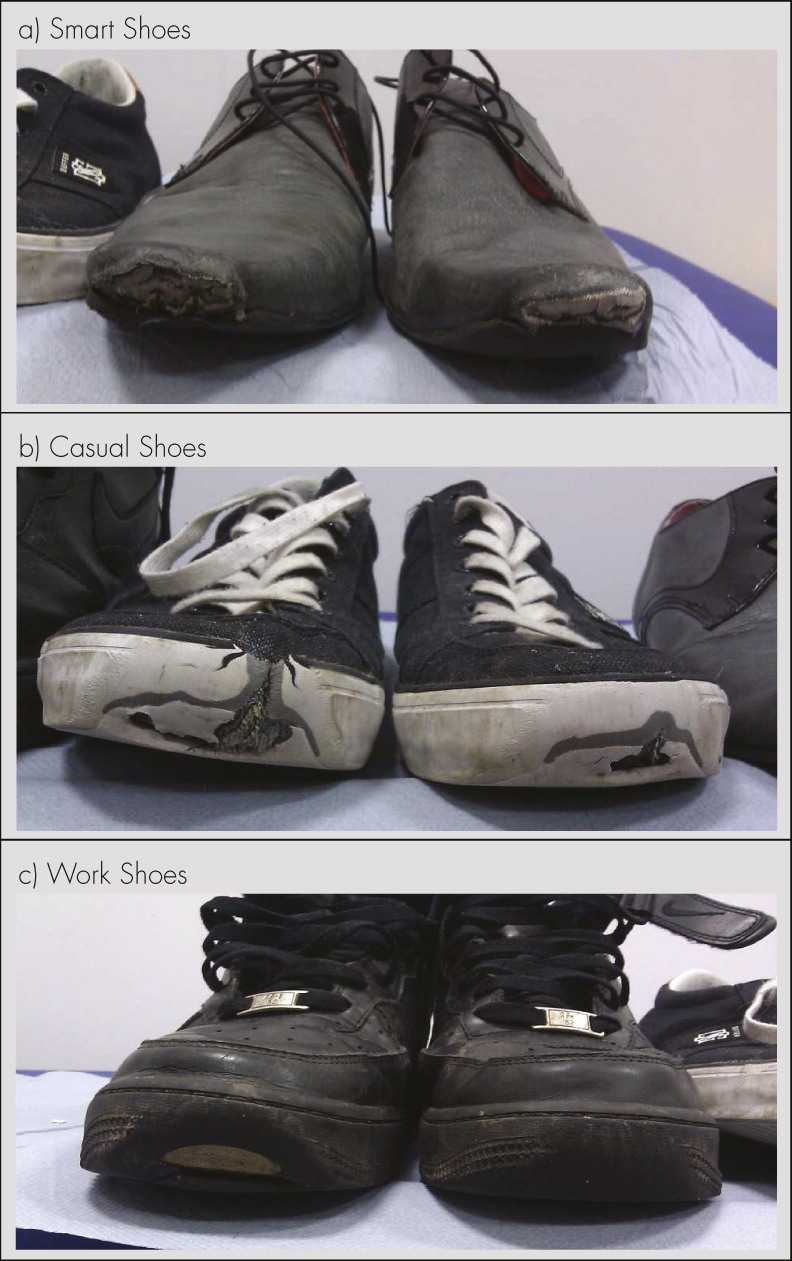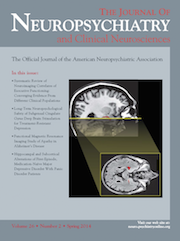To the Editor: Tourette syndrome (TS) is a neurodevelopmental condition characterized by motor and phonic tics, commonly presenting with comorbid behavioral problems.
1 We report the case of a patient with TS who presented with salient complex motor symptoms.
A.B. was referred to our specialist clinic for adults with TS aged 18, following an 11-year history of tics. He presented with complex motor tics, complex phonic tics, echolalia, echopraxia, palilalia, palipraxia, coprolalia, and copropraxia. His tics had characteristic premonitory urges, and he was able to voluntarily suppress them at the expense of a subsequent rebound in tic severity. He scored 100% on the Tourette Syndrome Diagnostic Confidence Index and 65% on the Yale Global Tic Severity Scale, indicating marked tic severity. He had a concomitant diagnosis of obsessive-compulsive disorder (OCD), experiencing obsessional thoughts and performing counting rituals. He did not report clinically significant attention deficit hyperactivity disorder (ADHD) symptoms.
As part of his tic repertoire, A.B. presented with repetitive bilateral kicking; this was associated with arithmomania. The repetitive movement was most apparent when walking and caused marked shoe damage, particularly at the shoe tip. It was not present when sitting or lying. The frequency and severity of this repetitive movement resulted in this patient requiring new pairs of shoes almost every week because of the extent of shoe deterioration (
Figure 1). In addition to slowing his walk down and therefore interfering with everyday activities, this complex tic symptom caused considerable hip and toe pain.
Interestingly, the kicking tic increased in frequency and severity with time and did not respond to antidopaminergic medication, whereas the other motor and vocal symptoms showed marked improvement on aripiprazole. Treatment with a selective serotonin reuptake inhibitor (SSRI) proved effective in reducing his obsessive compulsive symptoms and, to a lesser extent, the frequency of his kicking movements.
To our knowledge, there is only one other report of shoe damage and self-injury of the foot in the literature on TS.
2 This case is similar to the previous report in that the repetitive movements were refractory to pharmacotherapy, but their compulsive element is unusual. The compulsive nature of these symptoms is suggested by their refractoriness to conventional antidopaminergic treatment and partial response to serotonergic medication, raising the possibility that they represent tic-like compulsions.
3 This is also supported by the presence of comorbid OCD and the association with specific compulsive symptoms, such as arithmomania. It has been suggested that tic-related OCD should be included as a new subtype of OCD in the next edition of the Diagnostic and Statistical Manual of Mental Disorders, 5
th edition (DSM-V).
4 Tic-related OCD is thought to be etiologically related to chronic tic disorders and this new classification allows for conceptual integration between the two related conditions. The repetitive and stereotypical nature of complex motor tics and tic-like compulsions in the context of TS can result in self injurious movements, which have a large impact on patient’s health-related quality of life.
5Acknowledgments
The authors report no financial relationships with commercial interests.


